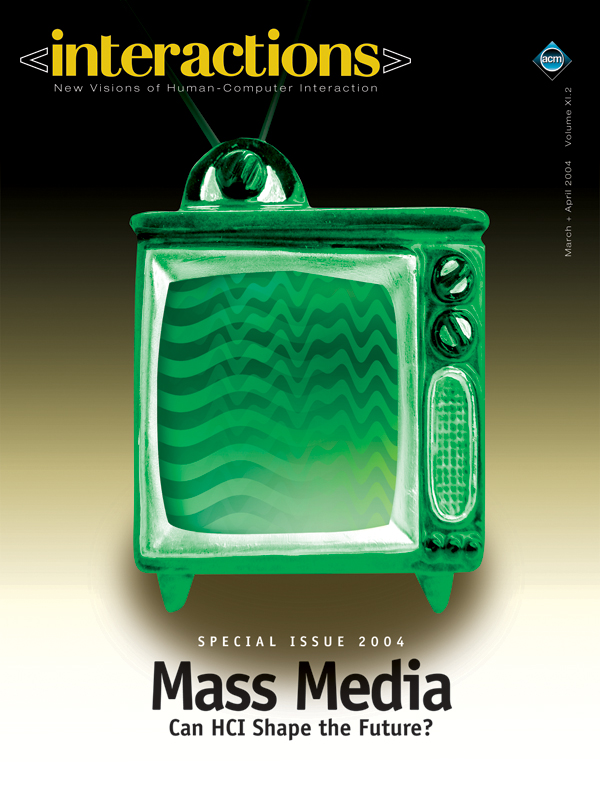Authors:
Andrew Zolli
At first blush, the question "is human-computer interaction design a key to the future of mass communication?" seems paradoxical. After all, the very thing that makes traditional mass communications platforms (such as television, radio, newspapers, and magazines) so successful is how completely they have solved their respective interface challenges. Radical ease of use is what enabled these communications formats to become mass media in the first place: Watching TV requires gestures so mindless that they often fall below the threshold of consciousness; the New York Post can be read even by hung-over, half-awake New Yorkers on their Monday morning…
You must be a member of SIGCHI, a subscriber to ACM's Digital Library, or an interactions subscriber to read the full text of this article.
GET ACCESS
Join ACM SIGCHIIn addition to all of the professional benefits of being a SIGCHI member, members get full access to interactions online content and receive the print version of the magazine bimonthly.
Subscribe to the ACM Digital Library
Get access to all interactions content online and the entire archive of ACM publications dating back to 1954. (Please check with your institution to see if it already has a subscription.)
Subscribe to interactions
Get full access to interactions online content and receive the print version of the magazine bimonthly.







Post Comment
No Comments Found